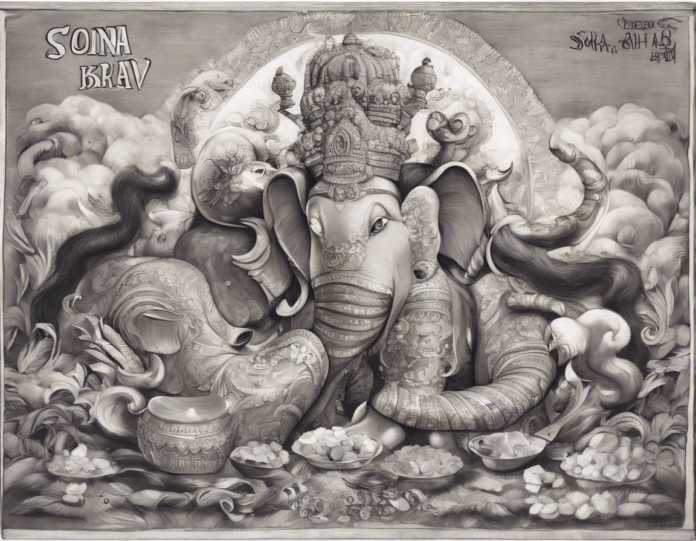The Sona ka Bhav is a common term used in the Indian context, especially in the North where it pertains to the prevailing rates of gold in the market. Understanding the significance of Sona ka Bhav goes beyond just being aware of the current price of gold; it involves delving into various factors that influence these rates, the impact of Sona ka Bhav on the economy and individuals, as well as the historical and cultural relevance of gold in India. In this comprehensive guide, we will unravel the essence of Sona ka Bhav and explore its multifaceted implications.
Factors Influencing Sona Ka Bhav
The Sona ka Bhav is subject to a myriad of factors that fluctuate constantly. Here are some crucial elements that influence the rates of gold:
1. Global Market Trends
The price of gold is heavily influenced by international trends. Any significant changes in major economies, geopolitical events, or fluctuations in currency values can impact the Sona ka Bhav.
2. Demand and Supply
The demand and supply dynamics play a crucial role in determining the rates of gold. If the demand for gold surpasses its supply, the prices are likely to surge, and vice versa.
3. Inflation Rates
Inflation is another critical factor that affects the value of gold. Investors often turn to gold as a hedge against inflation, driving up its prices during inflationary periods.
4. Central Bank Policies
Central bank policies, especially related to interest rates and quantitative easing, can have a significant impact on the price of gold. Lower interest rates typically lead to higher gold prices as it becomes a more attractive investment option.
5. Currency Strength
The strength of the currency in which gold is traded also influences its price. A weaker currency tends to drive up the price of gold as it becomes more expensive for investors holding other currencies.
The Economic Impact of Sona Ka Bhav
The Sona ka Bhav does not just affect individuals purchasing gold; it has broader economic ramifications:
- Inflation Hedge: Gold serves as a hedge against inflation, stabilizing the economy during periods of economic uncertainty.
- Impact on Imports and Exports: Fluctuations in gold prices can impact a country’s trade balance, especially for gold-importing nations.
Cultural and Historical Relevance of Gold in India
Gold has a deep-rooted cultural significance in India, transcending its monetary value:
- Traditional Value: Gold is considered auspicious and a symbol of prosperity in Indian culture, often exchanged during festivals and weddings.
- Investment Tradition: Indians have a long-standing tradition of investing in gold, which is passed down through generations.
Why is Sona Ka Bhav Important for Individuals?
Understanding the Sona ka Bhav is essential for individuals for the following reasons:
- Investment Decisions: Many individuals invest in gold as a way to diversify their portfolio. Knowledge of Sona ka Bhav helps in making informed investment decisions.
- Jewelry Purchases: For those buying gold for ornamental purposes, keeping track of gold prices helps in timing their purchases for better deals.
Frequently Asked Questions (FAQs)
1. What is the best time to buy gold considering Sona Ka Bhav?
The best time to buy gold depends on various factors like your investment goals, market trends, and economic conditions. Consulting with a financial advisor can help determine the optimal time for your gold purchase.
2. How can I track Sona Ka Bhav on a daily basis?
There are several financial websites, news channels, and apps that provide real-time updates on gold prices. You can also subscribe to newsletters or alerts for regular updates.
3. Does the purity of gold impact its price as per Sona Ka Bhav?
Yes, the purity of gold, often denoted by karats, directly affects its price. Higher purity levels command higher prices in the market.
4. What are the different ways to invest in gold related to Sona Ka Bhav?
Investors can invest in gold through various avenues, including physical gold, gold ETFs, gold futures, and gold mining stocks. Each option has its own set of risks and benefits, so it’s essential to research and choose wisely.
5. How does taxation work on gains from gold investments influenced by Sona Ka Bhav?
Taxation on gains from gold investments varies based on the holding period. Short-term capital gains (held for less than three years) are taxed as per the individual’s income tax slab, while long-term capital gains (held for more than three years) are taxed at a flat rate with indexation benefits.
Understanding the intricacies of Sona ka Bhav is essential for anyone with an interest in gold, whether for investment purposes or cultural significance. By staying informed about the factors influencing gold prices, individuals can make well-informed decisions regarding their gold investments and purchases.
